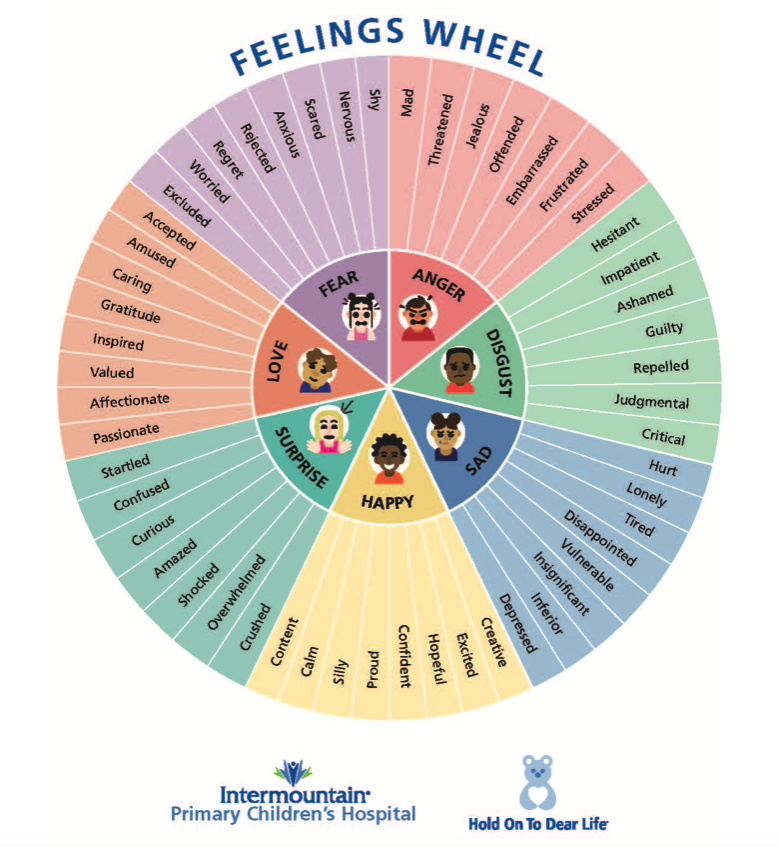



Many of us are familiar with the term “IQ” or “intelligence quotient,” which is a way of measuring intelligence. There is another form of intelligence, “EQ” or “emotional quotient” that measures a different kind of intelligence. EQ is about understanding our emotions and our ability to cope with difficult situations. The first step in growing our EQ is by first noticing and identifying our emotions. This week, we’ll be working on this skill by reflecting on our emotions and learning other names for our feelings.
Instructions:

Instructions:

Emotions and the Brain
Instructions:
As educators, we function as models for our students and our colleagues. Practicing the use of the feelings wheel is great for us too. Often, acknowledging and verbally naming our emotions, offers relief from that particular feeling and it offers permission for our students to do the same. Keep a feelings wheel or emotions ID poster in your classroom and use it to highlight your feelings, such as when you’re feeling “proud” of student behavior and accomplishments. Or share that you didn’t sleep well and feeling “tired and frustrated.” This transparency might elicit some compassion or empathy from your students, while modeling for them it is safe to be open and share.